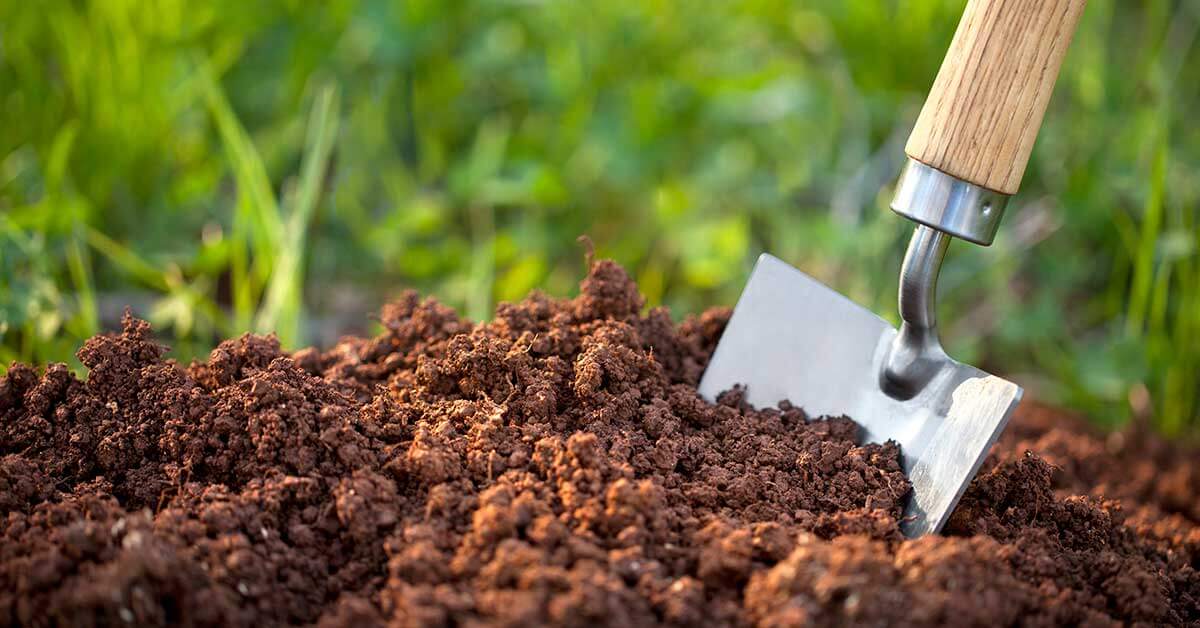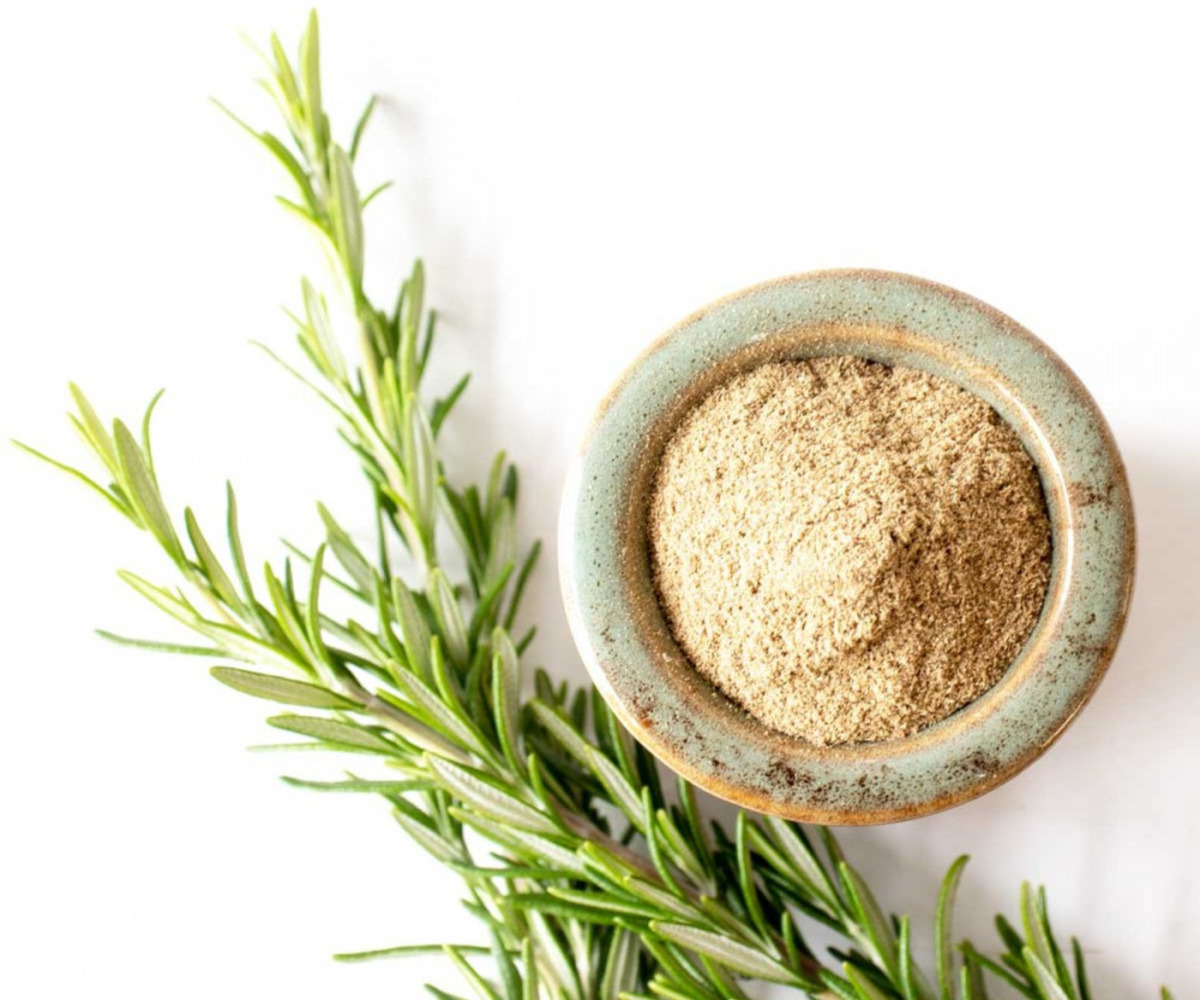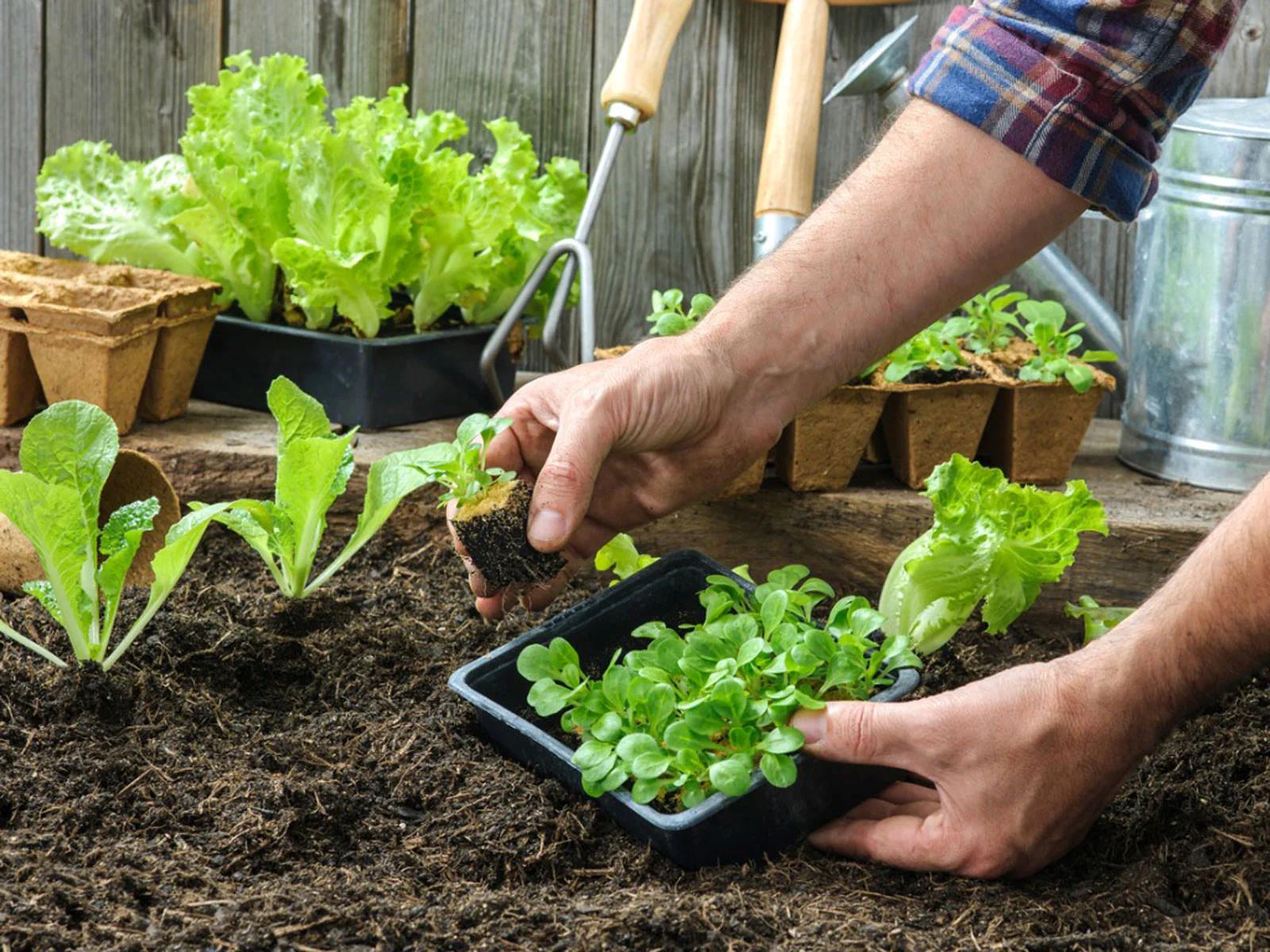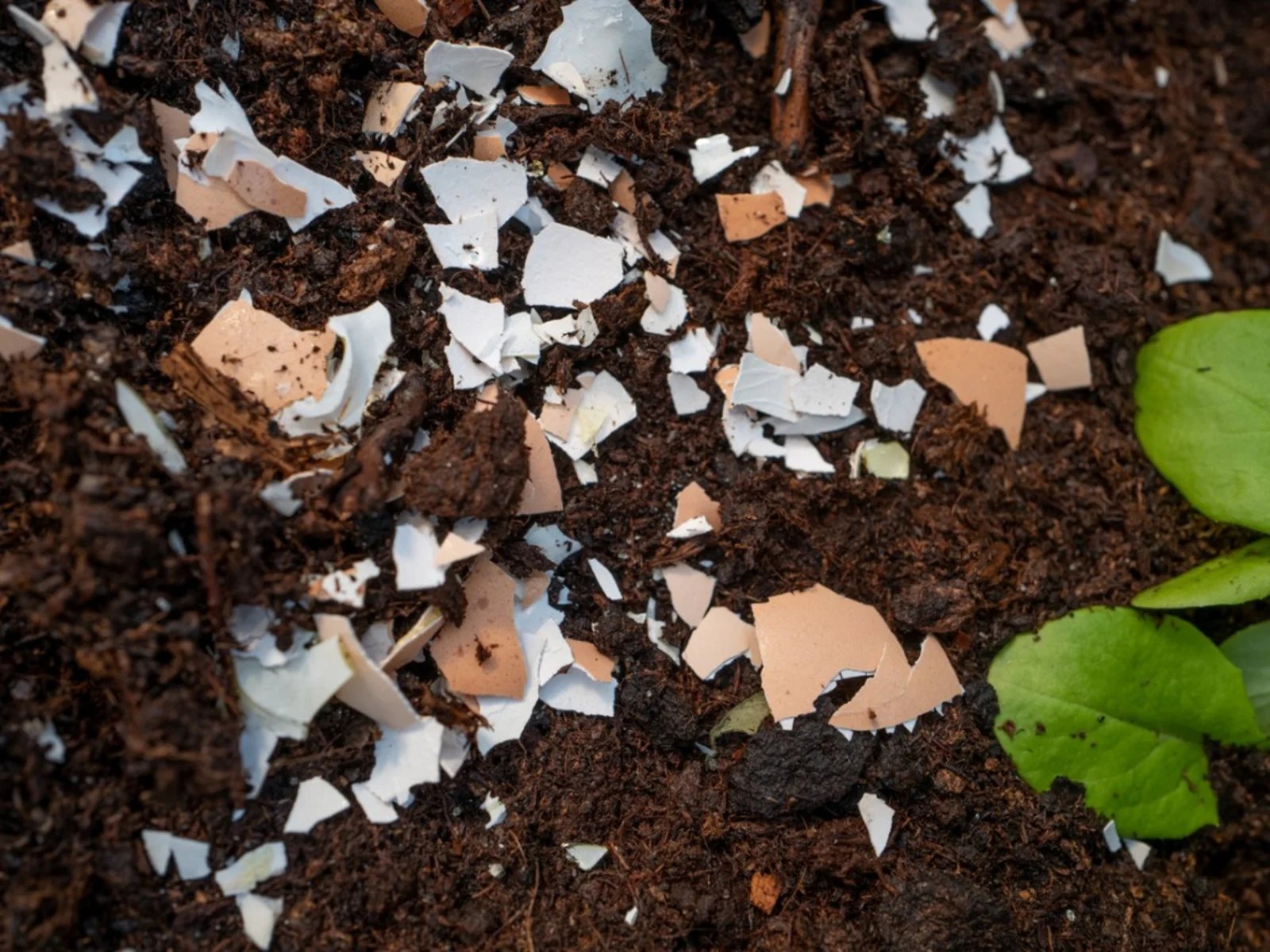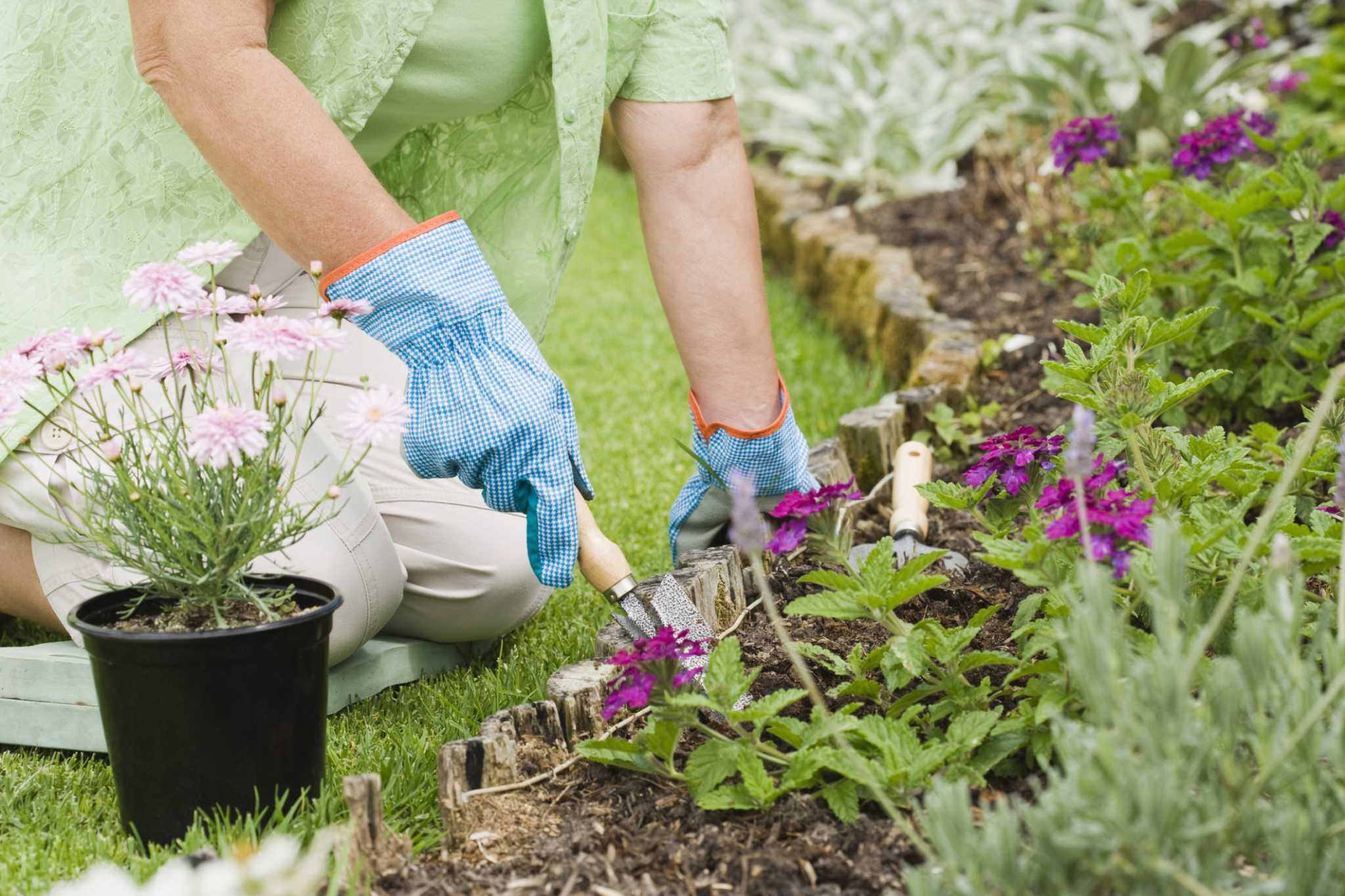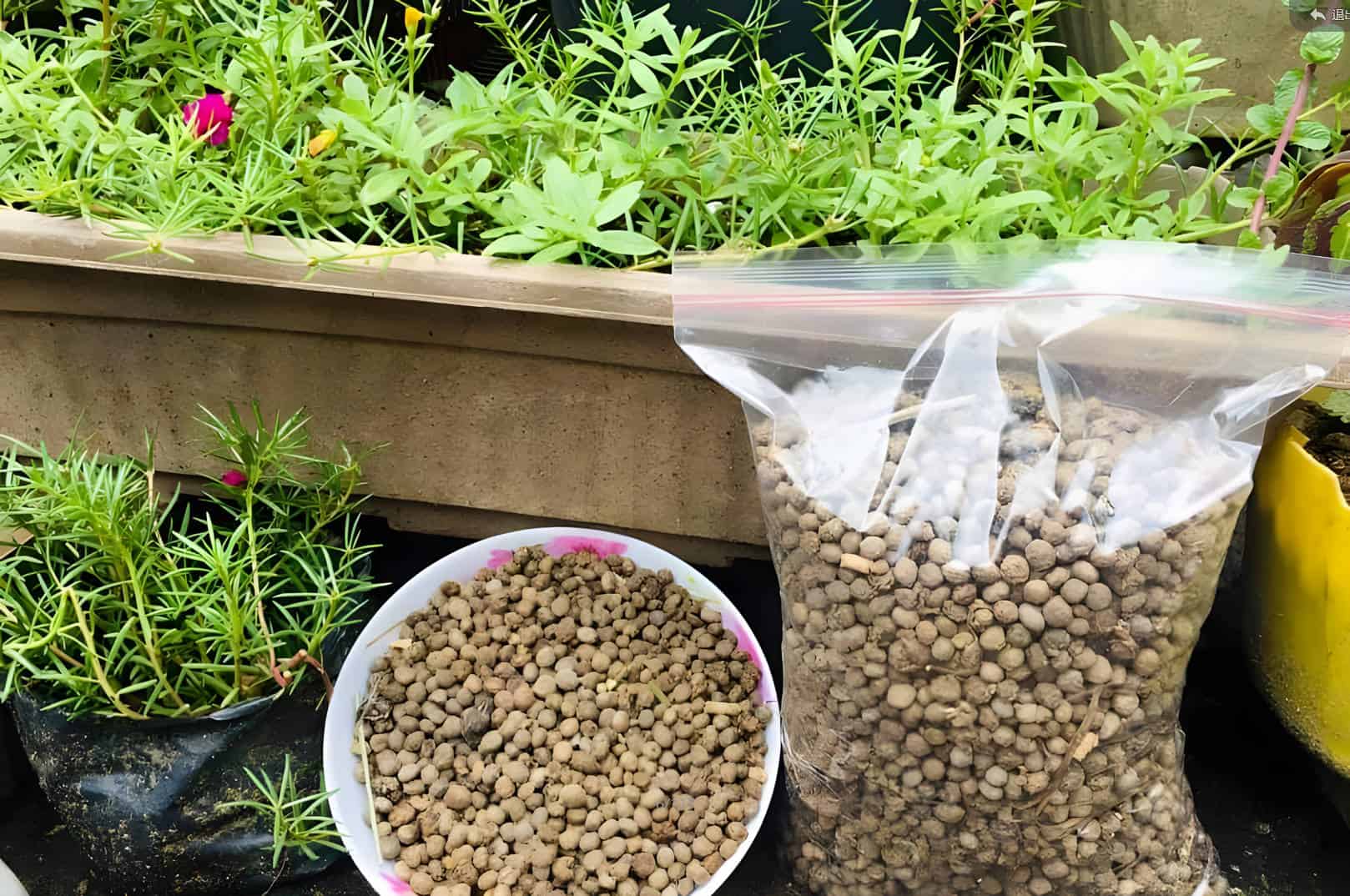Home>Gardening Techniques>Plant Care>How To Use Coconut Fiber For Planting
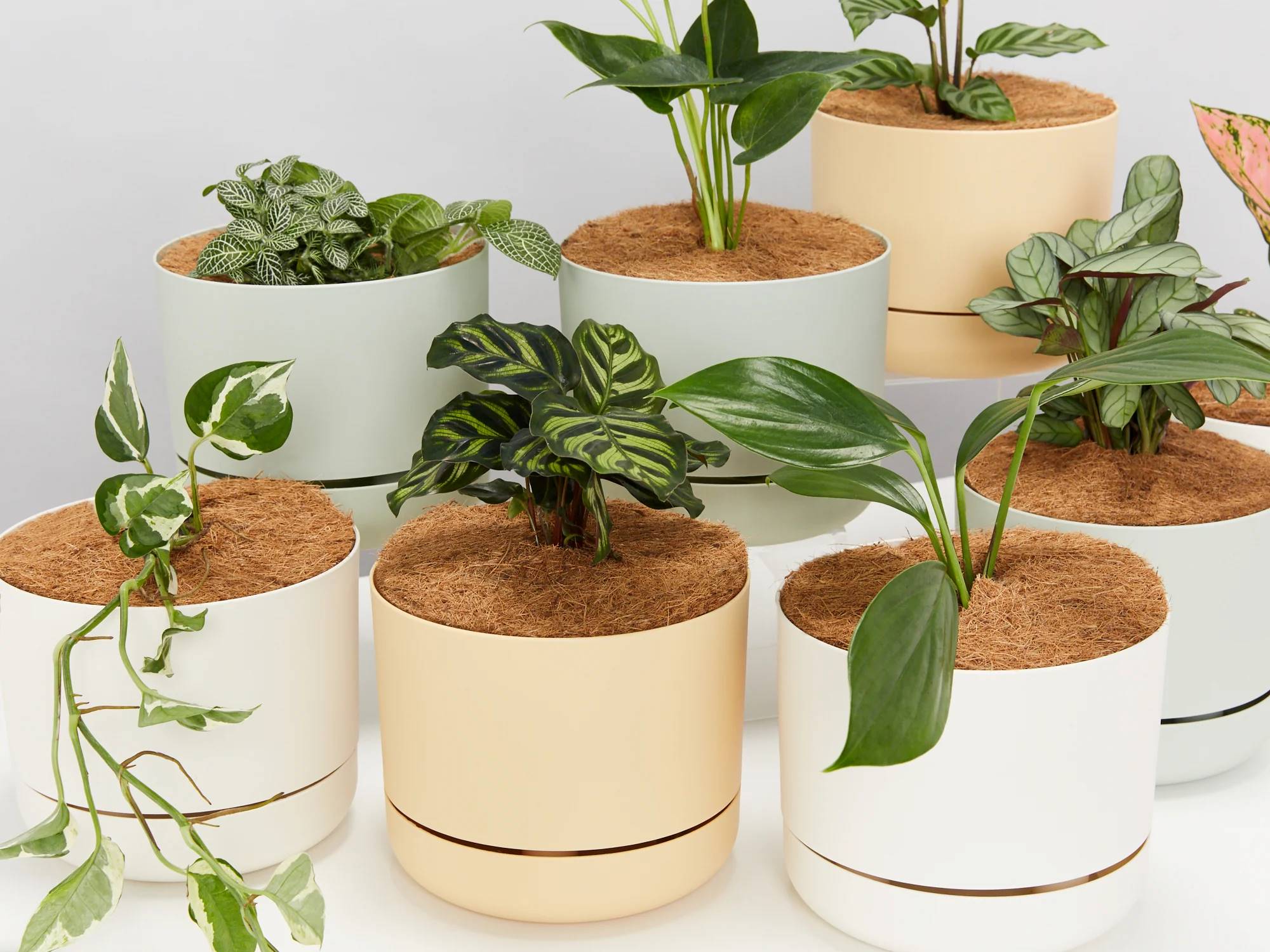

Plant Care
How To Use Coconut Fiber For Planting
Modified: January 22, 2024
Learn how to use coconut fiber for planting and enhance your plant care. Find tips and tricks for incorporating coconut fiber into your gardening routine.
(Many of the links in this article redirect to a specific reviewed product. Your purchase of these products through affiliate links helps to generate commission for Chicagolandgardening.com, at no extra cost. Learn more)
Table of Contents
- Introduction
- Benefits of Coconut Fiber for Planting
- Types of Coconut Fiber
- Preparing Coconut Fiber for Planting
- Using Coconut Fiber as a Growing Medium
- Planting Seeds or Seedlings in Coconut Fiber
- Caring for Plants in Coconut Fiber
- Watering and Fertilizing Coconut Fiber Plantings
- Tips and Tricks for Successful Planting with Coconut Fiber
- Conclusion
Introduction
Welcome to the world of plant care! If you’re an avid gardener or a plant enthusiast, you know how crucial it is to provide the best conditions for your plants to thrive. One essential element for successful plant growth is the right growing medium. In recent years, coconut fiber has gained popularity as a versatile and sustainable option for planting.
Coconut fiber, also known as coir, is a natural byproduct derived from the husk of coconuts. It is renowned for its excellent water retention, drainage properties, and ability to provide essential nutrients to plants. This makes it an ideal alternative to traditional growing mediums like soil or peat moss.
In this article, we will explore the various benefits of using coconut fiber for planting and how you can effectively incorporate it into your gardening routine. Whether you’re a beginner looking to start your first plant or a seasoned gardener seeking new methods, this guide will equip you with the knowledge you need for successful plant care with coconut fiber.
Before we delve into the specifics, it’s worth noting that coconut fiber is an environmentally friendly option. It is a sustainable alternative to peat moss, which is sourced from dwindling peat bogs, causing harm to the delicate ecosystem.
Now that we have set the stage, let’s explore the incredible benefits of coconut fiber for planting and how you can make the most of this remarkable growing medium.
Benefits of Coconut Fiber for Planting
Coconut fiber offers a wide range of benefits that make it a popular choice for plant enthusiasts. Let’s take a closer look at some of the key advantages:
- Excellent Water Retention: Coconut fiber has exceptional water retention properties, allowing it to hold moisture for extended periods. This helps prevent overwatering and ensures a consistent water supply to plant roots.
- Optimal Drainage: Along with its ability to retain water, coconut fiber also provides excellent drainage. It allows excess water to flow through, preventing waterlogged roots that can lead to root rot.
- Rich in Nutrients: Coconut fiber is naturally rich in nutrients, including potassium, calcium, and magnesium. These nutrients help nourish plants and promote healthy growth.
- pH Neutral: Unlike some growing mediums that may be acidic or alkaline, coconut fiber is pH neutral. This makes it suitable for a wide range of plants and allows for easy adjustment of pH levels if necessary.
- Resistant to Disease and Pests: Coconut fiber has natural resistance to diseases and pests. Its fibrous structure discourages the growth of harmful pathogens and helps maintain a clean and healthy growing environment.
- Sustainable and Environmentally Friendly: Coconut fiber is a sustainable option as it is a byproduct of coconut production. It reduces waste and promotes eco-friendly gardening practices. Additionally, its use helps to preserve peat bogs, which are vital to ecosystems.
These benefits combined make coconut fiber an excellent choice for a variety of plant species. Whether you’re growing vegetables, ornamentals, or indoor plants, coconut fiber can provide the optimal conditions for their healthy development.
Types of Coconut Fiber
When it comes to coconut fiber for planting, there are two main types available: coconut coir and coconut chips. Each type has its unique characteristics and uses. Let’s explore them in more detail:
- Coconut Coir: Coconut coir is the most commonly used type of coconut fiber. It is made from the fibrous material found between the outer husk and the shell of coconuts. Coconut coir comes in different forms, such as bricks, blocks, or loose fibers. It has a fine texture and excellent water-holding capacity, making it ideal for potted plants, greenhouses, and hydroponic systems.
- Coconut Chips: Coconut chips are larger chunks of coconut husk. They are commonly used as mulch or in orchid cultivation. Coconut chips have a larger particle size, providing better aeration and drainage. They help improve soil structure and prevent compaction. Coconut chips are also commonly used in vertical gardening systems and as a decorative ground cover for landscaping projects.
Both coconut coir and coconut chips have their advantages and can be used in various applications. The choice between the two depends on the specific needs of your plants and the desired garden setup.
It’s important to note that the quality of coconut fiber can vary depending on the source and manufacturing process. Look for reputable suppliers to ensure you’re getting high-quality coconut fiber that is free from contaminants and properly processed.
Now that we’ve explored the types of coconut fiber available, let’s move on to the next crucial step: preparing coconut fiber for planting.
Preparing Coconut Fiber for Planting
Before using coconut fiber as a growing medium, it’s essential to properly prepare it to create an optimal environment for your plants. Here’s a step-by-step guide on how to prepare coconut fiber for planting:
- Soaking the Coconut Fiber: Start by soaking the coconut fiber in water. This will help rehydrate the fibers and remove any salts or impurities. Place the coconut coir block or loose fibers in a large container and add water until fully submerged. Allow it to soak for at least 30 minutes, or until the fibers have absorbed enough water and expanded.
- Draining Excess Water: Once the coconut fiber has absorbed enough water, drain any excess water. Squeeze out the excess water from the fibers, ensuring they are moist but not waterlogged. This step is crucial to maintain the right moisture level for your plants.
- Breaking up the Fibers: If you’re working with a compacted coir block, break it apart into smaller pieces. This will help loosen the fibers and create a lighter, fluffier texture. Use your hands or a gardening tool to crumble the coir into manageable pieces.
- Fluffing and Separating the Fibers: Regardless of whether you’re using a coir block or loose fibers, it’s important to fluff and separate the fibers. This will help improve aeration and ensure even distribution of moisture throughout the planting medium.
- Optional: Mixing with Other Amendments: Depending on your plant’s specific needs, you may choose to mix the coconut fiber with other amendments. This can include materials like perlite or vermiculite for improved drainage, compost for added nutrients, or worm castings for enhanced soil fertility. Thoroughly mix the coconut fiber with the chosen amendments, ensuring an even distribution.
By following these steps, you can effectively prepare coconut fiber as a planting medium. The prepared coconut fiber will provide an excellent foundation for healthy plant growth, with optimal moisture retention and drainage capabilities.
Now that we’ve prepared the coconut fiber, let’s move on to exploring how to use it as a growing medium for your plants.
Using Coconut Fiber as a Growing Medium
Coconut fiber is an excellent alternative to traditional soil-based growing mediums. Its water retention, aeration, and nutrient-rich properties make it an ideal choice for nurturing healthy plants. Here are some guidelines on how to effectively use coconut fiber as a growing medium:
- Potting Container Selection: Choose pots or containers that provide proper drainage. This is essential to prevent waterlogging and ensure sufficient airflow to the roots. Consider using containers with drainage holes or add a layer of gravel at the bottom to facilitate drainage.
- Filling the Containers: Fill the containers with the prepared coconut fiber, leaving enough space for the plants’ root systems. Gently press the coconut fiber to ensure it is evenly distributed and compacted, but not overly compacted to restrict root growth.
- Transplanting Seedlings or Planting Seeds: Carefully remove seedlings from their nursery containers and place them into the filled containers. Ensure that the roots are properly covered with coconut fiber and lightly firm the medium around the base of the plant. If starting from seeds, create small holes in the coconut fiber, place the seeds at the appropriate depth, and lightly cover them.
- Watering: Coconut fiber has excellent water retention, but it’s important not to overwater your plants. Before watering, check the moisture level of the growing medium by sticking your finger into the coconut fiber. If it feels dry about an inch below the surface, it’s time to water. Thoroughly moisten the coconut fiber, allowing any excess water to drain out of the container.
- Monitoring and Adjusting: Regularly monitor the moisture level of the coconut fiber by checking the top inch of the medium. Adjust your watering frequency accordingly to ensure that the medium remains consistently moist but not waterlogged. This will help prevent root rot and allow for proper plant growth.
- Feeding Nutrients: Coconut fiber naturally contains some nutrients, but additional fertilizer may be necessary for optimal plant growth. Use a balanced fertilizer or a specific formulation based on your plant’s needs. Follow the recommended dosage and frequency as stated on the fertilizer packaging.
- Pruning and Maintenance: Regularly inspect your plants for any signs of overgrowth or wilting. Prune away any dead or damaged foliage to encourage healthy growth. Additionally, monitor your plants for pests or diseases and take appropriate action if necessary.
By following these guidelines, you can successfully utilize coconut fiber as a growing medium for a wide range of plants. The combination of its water retention, aeration, and nutrient-rich properties will create an optimal environment for healthy and thriving plants.
Now that you know how to use coconut fiber as a growing medium, let’s move on to the essential care tips for plants in coconut fiber.
Planting Seeds or Seedlings in Coconut Fiber
Planting seeds or seedlings in coconut fiber is a straightforward process that can yield successful results. Here are some steps to follow when using coconut fiber to propagate your plants:
- Prepare the Coconut Fiber: Begin by preparing the coconut fiber as mentioned in the previous section. Soak it in water, drain excess water, and fluff up the fibers. Ensure the fiber is adequately moist but not waterlogged before planting.
- Select Suitable Containers: Choose containers that have proper drainage holes and are of an appropriate size for your plants. Consider using biodegradable containers or seed trays to simplify the transplanting process later on.
- Plant Seeds: If starting from seeds, create small holes in the coconut fiber using a finger or a dibber. Follow the recommended planting depth for the specific seed variety. Place the seeds in the holes and lightly cover them with coconut fiber. Gently press down the medium around the seeds to ensure good contact.
- Transplant Seedlings: If you’re working with seedlings, carefully remove them from their nursery containers, ensuring minimal disturbance to the root system. Create a hole in the coconut fiber large enough to accommodate the roots and place the seedling into the hole. Fill any gaps with additional coconut fiber and firm it gently around the base of the plant.
- Provide Adequate Moisture: After planting the seeds or seedlings, water them thoroughly. Ensure the coconut fiber is evenly moist and drains any excess water to prevent overwatering. Monitor the moisture level regularly and adjust your watering schedule as needed to keep the medium consistently moist, but not saturated.
- Provide Appropriate Lighting and Temperature: Place your containers in a suitable location that provides the right amount of sunlight or artificial light for your plants’ requirements. Additionally, maintain the ideal temperature range for optimal germination and growth.
- Care for Seedlings: Monitor the growth of your seedlings and provide proper care. This includes regular watering to keep the coconut fiber moist, and fertilizing with a diluted balanced fertilizer when necessary. Ensure adequate ventilation to prevent fungal diseases and adjust lighting conditions to promote healthy growth.
- Transplanting: Once your seedlings have developed strong roots and are a suitable size for transplanting, carefully remove them from the coconut fiber containers and transfer them to their permanent planting location. Handle the seedlings gently to avoid damaging the roots.
- Continue Maintenance: After transplanting, monitor and care for your plants as needed, providing appropriate watering, fertilizing, and pruning. Ensure the coconut fiber medium remains consistently moist but well-drained to support optimal root health and growth.
By following these steps, you can successfully plant seeds or seedlings in coconut fiber and nurture them to become healthy, robust plants. Whether you’re starting a vegetable garden or growing ornamentals, coconut fiber can provide an excellent medium for propagation.
Now that you know how to plant seeds or seedlings in coconut fiber, let’s discover the essential care tips for maintaining plants in this growing medium.
Caring for Plants in Coconut Fiber
Caring for plants in coconut fiber involves providing the right conditions and regular maintenance to ensure their health and vitality. Here are some essential care tips to keep in mind:
- Watering: Coconut fiber has excellent water retention properties, but it is important not to overwater your plants. Check the moisture level of the medium regularly by inserting your finger into the coconut fiber. Only water when the top inch of the medium feels dry. Thoroughly moisten the coconut fiber, allowing excess water to drain out of the pot to avoid waterlogging.
- Fertilizing: While coconut fiber contains some natural nutrients, additional fertilization may be necessary for optimal plant growth. Choose a balanced liquid fertilizer suited to your plant’s needs and dilute according to the manufacturer’s instructions. Apply the fertilizer during the plant’s active growing season, typically every two to four weeks.
- Pruning: Regular pruning is essential to maintain the shape and health of your plants. Trim away dead or yellowing leaves, as well as any damaged or diseased parts. Pruning also helps stimulate new growth and encourages better airflow, reducing the risk of fungal diseases.
- Monitoring Light Exposure: Ensure that your plants receive the appropriate amount of light based on their specific requirements. Some plants thrive in full sun, while others prefer partial shade. Monitor the light exposure and adjust the positioning of your plants accordingly. If growing indoors, consider using grow lights to supplement natural light if needed.
- Pest and Disease Control: Coconut fiber is generally resistant to pests and diseases. However, it is still essential to monitor your plants for any signs of infestation or infection. Inspect the foliage regularly and take immediate action if you spot any pests or signs of disease. Use appropriate organic or chemical pest control methods to address the issue promptly.
- Regular Maintenance: Regularly check your plants for any signs of stress, such as wilting or yellowing leaves. Remove any spent flowers or dead plant material to maintain a tidy and healthy growing environment. Keeping your plants well-maintained will help prevent the spread of pests and diseases.
Remember that each plant species may have specific care requirements, so it’s essential to research and understand the needs of your plants. Coconut fiber provides a favorable growing medium, but attentive care is vital for the overall well-being of your plants.
By following these care tips, you can foster healthy plant growth and enjoy the rewards of a thriving garden or indoor plant collection.
Now that you’re familiar with caring for plants in coconut fiber, let’s explore some additional tips and tricks for successful planting with this growing medium.
Watering and Fertilizing Coconut Fiber Plantings
Proper watering and fertilizing are critical for the success of plantings in coconut fiber. Maintaining the right moisture level and providing essential nutrients are essential to support healthy growth. Here are some guidelines for watering and fertilizing coconut fiber plantings:
- Watering: Coconut fiber has excellent water retention properties, but it’s important not to overwater your plants. Before watering, check the moisture level of the coconut fiber by sticking your finger about an inch below the surface. If it feels dry, it’s time to water. Thoroughly saturate the coconut fiber, allowing any excess water to drain out of the container. Avoid letting the plants sit in standing water as this can lead to root rot.
- Monitoring Moisture Levels: Regularly monitor the moisture level of the coconut fiber to ensure it remains consistently moist. While coconut fiber retains water well, it can also dry out quickly, especially in warmer environments. Stick to a watering schedule that suits your plants and environmental conditions, ensuring the medium is evenly moist but not waterlogged.
- Fertilizing: Coconut fiber contains some natural nutrients, but supplemental fertilization may be necessary to provide your plants with adequate nourishment. Choose a balanced water-soluble fertilizer or a specific formulation suitable for the plant’s needs. Follow the manufacturer’s instructions for the correct dosage and application frequency. It’s generally best to apply fertilizer when the plants are actively growing, typically during the spring and summer months.
- Applying Fertilizer: When fertilizing coconut fiber plantings, dilute the fertilizer according to the recommended ratio. Apply the fertilizer solution to the moist coconut fiber, ensuring even coverage. Take care not to apply an excessive amount of fertilizer, as this can lead to nutrient imbalances and potential damage to the plants. Always follow the instructions on the fertilizer packaging for the best results.
- Observing Plant Response: Keep a close eye on your plants after fertilization. Observe how they respond to the fertilizer and adjust the dosage if necessary. Some plants may require more frequent fertilization, while others may have specific nutrient requirements. Pay attention to any signs of nutrient deficiencies or excesses, such as yellowing leaves or stunted growth, and adjust your fertilization strategy accordingly.
- Irrigation Methods: There are various irrigation methods that can be used with coconut fiber plantings. In addition to traditional watering from the top, other options include drip irrigation, which provides a slow and controlled water supply directly to the root zone. This can help prevent water wastage and ensure efficient water distribution throughout the coconut fiber medium.
- Organic Alternatives: If you prefer organic gardening, there are organic fertilizers available that can be used with coconut fiber plantings. Look for organic fertilizers that are specifically formulated for container plants or those that are suitable for the plant species you are growing. These fertilizers provide nutrients in a natural and sustainable way, promoting healthy growth without the use of synthetic chemicals.
Remember, proper watering and fertilizing practices may vary depending on the specific plant species, environmental conditions, and other factors. It is important to understand the individual needs of your plants and adjust your watering and fertilizing routine accordingly.
By following these guidelines for watering and fertilizing coconut fiber plantings, you can provide your plants with the necessary care and create an optimal growing environment for their successful development.
Now, let’s explore some additional tips and tricks to help you achieve even greater success with planting in coconut fiber.
Tips and Tricks for Successful Planting with Coconut Fiber
Planting with coconut fiber is a rewarding and sustainable method that can promote the healthy growth of your plants. To further enhance your success, here are some valuable tips and tricks to keep in mind:
- Choose the Right Coconut Fiber: Ensure that you select high-quality coconut fiber from a reputable supplier. Look for fiber that is free of contaminants and properly processed to ensure optimal performance.
- Consider Combination Plantings: Coconut fiber can be used alone or combined with other growing mediums. Experiment with different combinations to find the best balance of moisture retention, aeration, and nutrient availability for your specific plants.
- Implement Mulching: Applying a layer of coconut chips or coconut fiber mulch on top of the planting medium can help conserve moisture, suppress weed growth, and regulate soil temperature. This is particularly beneficial for outdoor plantings in warmer climates.
- Monitor and Adjust pH Levels: While coconut fiber is naturally pH neutral, it can slowly become more acidic over time. Regularly monitor the pH of the medium and adjust if necessary by adding lime or sulfur based on the specific needs of your plants.
- Use Coco Peat for Seed Starting: Coco peat, a finer particle size of coconut fiber, can be an excellent choice for starting seeds. Its fine texture provides good contact with the seeds, promoting germination and seedling establishment.
- Combine Coconut Fiber with Compost: Boost the nutrient content of the coconut fiber by mixing it with compost. This will enhance the organic matter content and provide a rich source of nutrients for your plants.
- Observe Proper Air Circulation: Ensure there is adequate air circulation around your plants, especially in enclosed spaces. Provide proper ventilation to prevent the development of fungal diseases and promote stronger plant growth.
- Adjust Watering in Different Seasons: The watering needs of your plants may vary depending on the season. In hotter months, you may need to water more frequently, while during cooler months, you may need to reduce the watering frequency to prevent over-saturation.
- Reuse and Recycle: Coconut fiber is a sustainable and reusable medium. After harvesting your plants, you can reuse coconut fiber for future plantings or add it to your compost pile to enrich your garden soil.
- Learn from Experience: Each plant and growing environment is unique. Pay close attention to how your plants respond to different conditions, watering schedules, and fertilizers. Make adjustments based on your observations and learn from your experiences to refine your planting techniques.
By following these tips and tricks, you can optimize your planting experience with coconut fiber and create an environment where your plants can thrive. Remember, gardening is a continuous learning process, so be patient and enjoy the journey of nurturing your plants.
Now that you are equipped with a wealth of knowledge on planting with coconut fiber, you can confidently embark on your plant care journey and create a thriving and vibrant garden.
Conclusion
Planting with coconut fiber offers a sustainable, versatile, and nutrient-rich option for gardeners and plant enthusiasts. This natural growing medium provides excellent water retention, drainage, and nutrient availability, creating an optimal environment for healthy plant growth.
Throughout this article, we have explored the numerous benefits of coconut fiber, including its water retention capabilities, optimal drainage properties, nutrient-rich composition, pH neutrality, resistance to diseases and pests, and its environmentally friendly nature. We have also discussed the different types of coconut fiber, how to prepare it for planting, and the steps to effectively use it as a growing medium for seeds and seedlings.
Caring for plants in coconut fiber involves proper watering, fertilization, pruning, light exposure, and vigilance against pests and diseases. By following the guidelines and tips provided, you can maintain the right moisture levels, provide essential nutrients, and create an ideal growing environment for your plants.
Remember to monitor and adjust your watering and fertilizing practices as needed, as each plant species may have specific requirements. Regular maintenance, observation, and learning from experience will further support the health and vitality of your plants in coconut fiber.
Whether you are planting vegetables, ornamentals, or tending to indoor plants, utilizing coconut fiber as a growing medium can help you achieve successful and bountiful results. Its sustainable nature and beneficial properties make it an eco-friendly choice for plant care.
So, why not embark on your plant care journey with coconut fiber? Embrace experimentation, learn from the unique needs of your plants, and enjoy the satisfaction of nurturing thriving and vibrant greenery in your garden or indoor space.
Happy planting!
